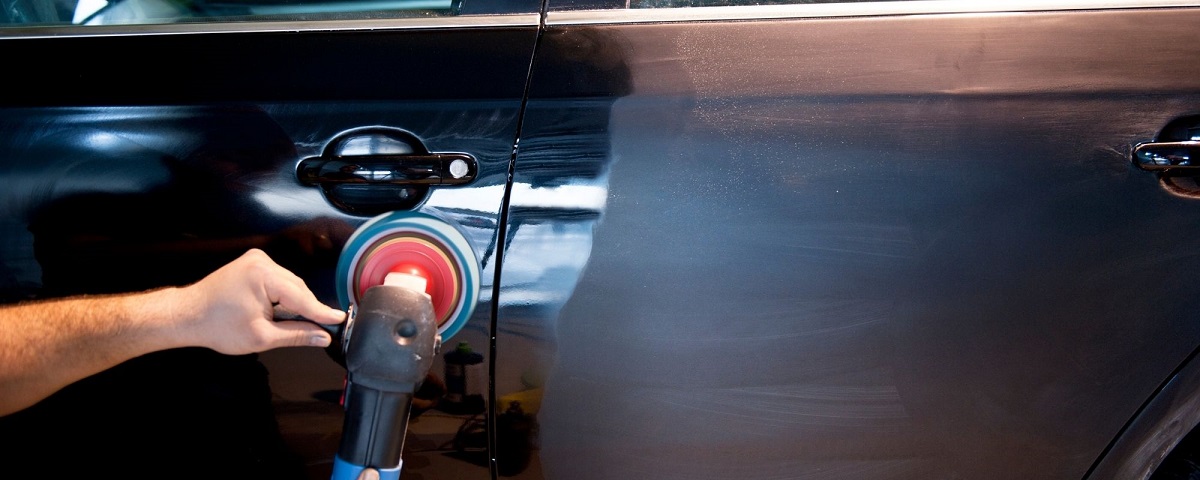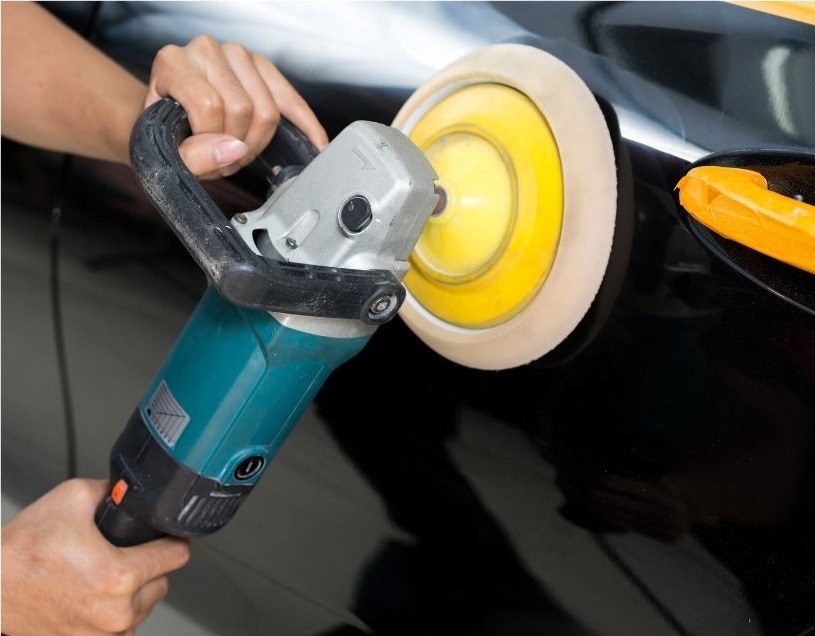
Top 3 DIY Ways on How to Wax a Car with Long-Lasting (Best) Results
Think of car wax as a cream that protects your hands. Since it’s hydrophobic when water falling on it’ll bead up and roll off, so your vehicle stays cleaner.
Secondly, atmospheric fallout and city dust tend to damage your paint in various ways. A microscopically thin layer of wax prevents or reduces damaging chemical interactions with these contaminants.
You’ll need to wax the vehicle with a high-quality product at least once every 3 months. When it comes time to sell, it’ll look like new, and you’ll get a correspondingly higher price.
Read the guide and learn:
- What does waxing your car do;
- How to wax a car by hand;
- How to wax your car with a buffer;
- How to wax a black car;
- How often should I wax;
- How long does it take;
- How long to leave wax.
MUST READ: 5 Best Car Wax Products to Try in 2022
What Does a Waxing Your Car Do?
Waxing involves applying a thin coat of wax to your vehicle’s paint, letting it harden slightly, and then buffing it off with a polisher or towel.
While it may seem that you’ve removed all the wax from the paint, a thin protective coat is left behind. Even it’s not visible to the naked eye, this protective coat has numerous benefits, including.
Sun protection – Wax is like sunscreen for your ride. Its thin protective coat left on the paint builds a barrier that keeps the sun’s rays from harming it. By maintaining a coat of wax, you’ll prevent oxidation, discoloring, and fading, which are common effects of sun damage.
High gloss finish – A coat of wax will also give you’re a mirror-like finish and make the showroom shine. Wax on the molecular level polishes the clear coat of your vehicle and brings out the car gloss and color.
Escapes water spots – When it rains, water collects on the paint, and as it starts to evaporate, dirt and pollutants from the water are left behind. With a coat wax, water will bead up and roll of your “baby.” This results in less water remaining on the paint, and less water means less dirt and contaminates left behind.
How to Wax a Car by Hand
Follow the instructions to learn how to properly wax a car.
Step #1 Choose a proper wax
Buy a high-quality car wax. You can find a wide array of waxes at your local store or at most auto parts shops. There’re several most prominent brands to pick from.
Step #2 Wash the car
It’s ideal to apply auto wax to a clean and dry car. Either you take your ride to a car wash or wash it yourself before spreading the wax. Be sure that your car is thoroughly dry.
Step #3 Read the instructions on the product
Some manufacturers have particular instructions. Always read the product’s recommended usage.
Step #4 Predation
Choose an area of your car to start waxing. Dip the pad into the solution, so that a thumb-sized glob is on the pad.

Step #5 Start waxing
Spread the wax through a small, circular motion. A thin layer of the solution should be spread to the entire car paint. It’s the best way to wax a car – applying either vertical or horizontal rows of circles to ensure that the whole surface of the vehicle is covered.
Step #6 Drying
After you have applied the wax to the entire vehicle, the area that you started in should be dried. When the wax is dry, it’ll appear matte and feel somewhat chalky.
Step #7 Remove the wax
Using a deerskin, old t-shirt, or other soft cloth, “take off” the wax from the surface of your car. Use a circular motion to “take away” the wax and buff the surface of your machine.
After the wax is eliminated, the surface on your car should appear glossy and shiny.
How to Wax a Car with a Buffer
This method reduces the amount of time waxing car takes, while also providing great showroom type finish. Read the following steps on how to do it properly:
Work in the shade/garage – Make sure you wax your vehicle in the shade or in a garage. If you’re going to work in the sun, the wax can dry too quickly, making you all kinds of problems. Working indoors enables you to “skip” any potential bird droppings.
Wash the car – First, as with any waxing, it’s always the best idea to wash the vehicle before waxing it. The paint should be smooth as glass, and debris free. Avoid soapy residues and ensure that the car is thoroughly dry before applying wax to it.
Apply the wax – Set the wax applicator over the buffer pad. Without turning the buffer on, spread the wax to the car, using a large circular motion. Finally, smoothly apply the wax to the vehicle by turning on your buffer.

Don’t put a lot of pressure on the buffer. It should glide across the surface of the vehicle. Let the tool do its work without any additional stress on it.
Try to spread the wax in a line in the same direction as the metal flows. Let the wax completely dry, giving the vehicle a hazy appearance.
Buff the car – Remove the wax applicator from the buffer and put the wax removal cloth on the buffer. Then, buff off the dried wax applying long smooth strokes.
Never buff in a circle, so you won’t leave swirl marks on the paint. Let the buffer to work without too much pressure, simply guide the tool. This’s extremely important when buffing your vehicle.
How to Wax a Black Car
Once they are waxed, vehicles with black paint are more likely to show blemishes, swirls, streaks, and other imperfections compared to cars with different paint colors.
Black cars require a special black car wax. Track these instructions and learn how to wax a black car properly.
Step #1 Prepare your car
Wash and dry your black vehicle before you start waxing. A complete wash and dry is crucial to let the wax to be applied smoothly.
Step #2 Purchase black car wax
Buy black car wax. Use the wax if your black paint has hairline scratches or other minor blemishes or if it needs its shine restored. Colored solutions can restore the shine of fading paint only if the paint is oxidized.
Step #3 Apply wax
Apply wax by hand. Use a cheesecloth or damp terry cloth, and squeeze or scoop out a small amount of wax onto the cloth.
Spread the wax with moderate pressure and apply circular motions that overlap. Medium pressure ensures that the product can get fully worked into scratches and other blemishes.
Step #4 Buff out the wax
Buff out the wax after it has dried to a glaze. It ensures that all the excess wax is removed, and the new shine is revealed.
Step #5 Final touch
Employ a lamb’s wool buffing pad to buff an extra scent of “wet look” shine if the previous step didn’t produce a shine that satisfies you. Use it in circular motions with moderate pressure to get the desired appearance.
How Often Should I Wax My Car
Car detailers commonly recommend that you should apply (as we mentioned) a car wax once every 3 months at the least. Some types of wax are made to work more often than that.
For those obsessed with maintaining the ideal wax finish, that might even include products meant to be applied every few days.
For protection that lasts a longer time, you’ll need paste or liquid waxes. These are meant to last up to 6 months if the vehicle is protected from harsh weather elements and kept inside a garage.
Although most folks have their own ideas on the frequency and scheduling of cleaning and waxing a car, there’re no firm promises made by manufacturers about this topic.
How Long Does It Take to wax a Car?
The answer is a bit tricky since it all depends on many factors. What type of car do you own? What type of wax are you going to be using?
Obviously, if you have a big SUV, it is going to take a lot longer to wax than a small city vehicle. Typically, a smaller car is going to take about 1 hour to wax.
Still, if you add claying into the process, and rinsing, the entire operation could roughly take around 4-5 hours. For a larger car waxing process, you may need even 9 hours or more.
How Long to Leave Wax on a Car
All of the waxes need to dry prior to removal. If you can make a clean swipe with your finger (typically up to ten minutes depending on ambient and weather temperature), the solution is ready for the final wipe down.
There’s no maximum time that the wax can be left on the paintwork, so it’s good practice to apply wax to the whole car before beginning to wipe off.
